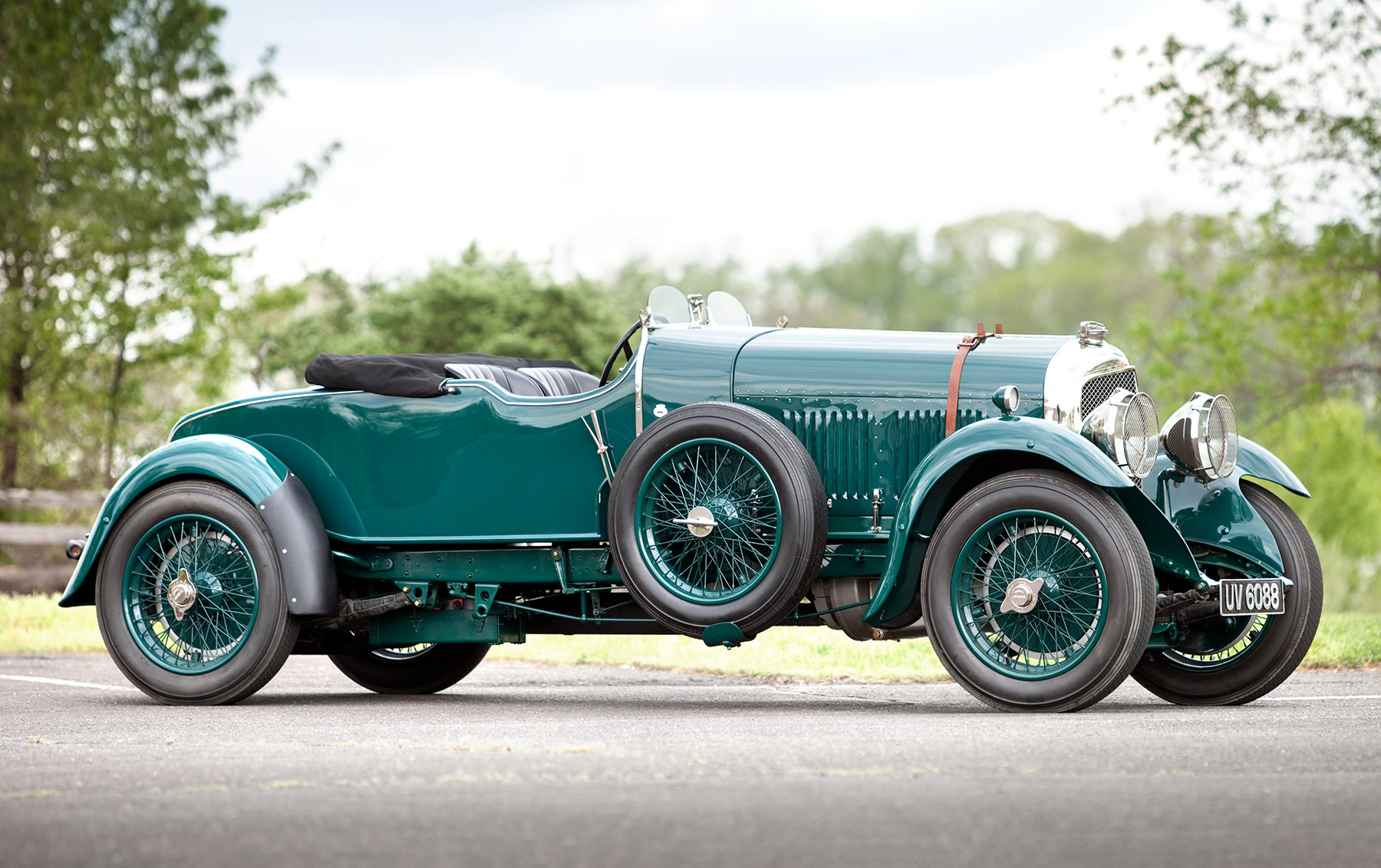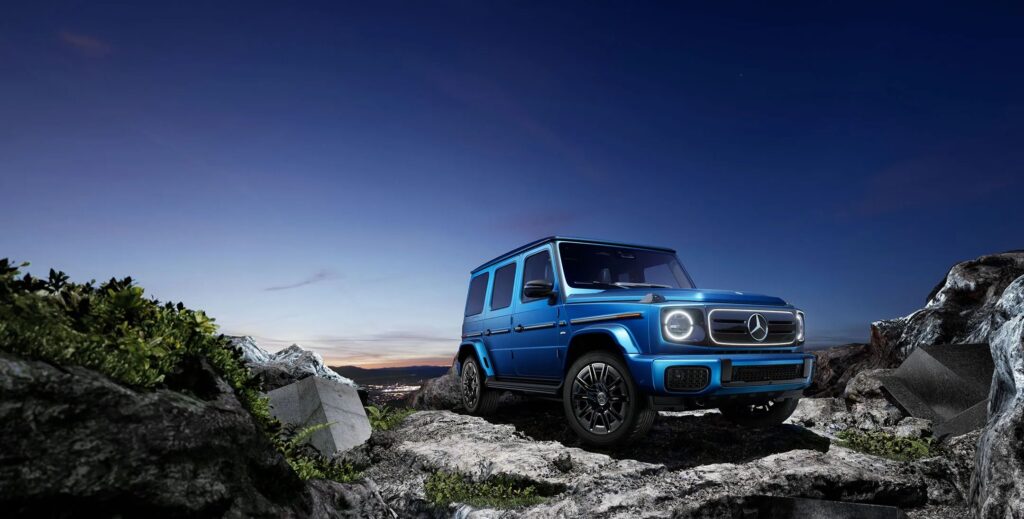
Luxury cars have long symbolized more than just transportation; they represent success, refinement, and a commitment to unparalleled comfort and style. The allure of a finely tuned engine, the embrace of sumptuously appointed leather seats, and the smooth, isolated ride over any terrain all contribute to an experience designed to transcend mere utility. This aspiration often drives consumers to invest significant sums, expecting a seamless blend of performance and prestige.
However, the glamorous facade of luxury automobiles often conceals a crucial reality that many buyers only discover after the initial thrill of ownership fades: the true cost of a car extends far beyond its purchase price. For many high-end vehicles, the real financial implications, particularly in terms of maintenance and depreciation, only begin to surface once the factory warranty expires or the odometer registers a certain milestone. These ongoing expenses can transform a dream acquisition into a recurring financial burden.
In this comprehensive analysis, we delve into the intricate details of luxury car ownership, drawing on expert insights and real-world data to identify those models that, despite their initial appeal, frequently fail to deliver on their promise of value. Our goal is to provide a fact-based, consumer-oriented guide, highlighting luxury cars that might ultimately prove to be not worth their hefty monthly payments, whether due to inherent quality issues, outdated technology, or a devastating lack of long-term value retention.
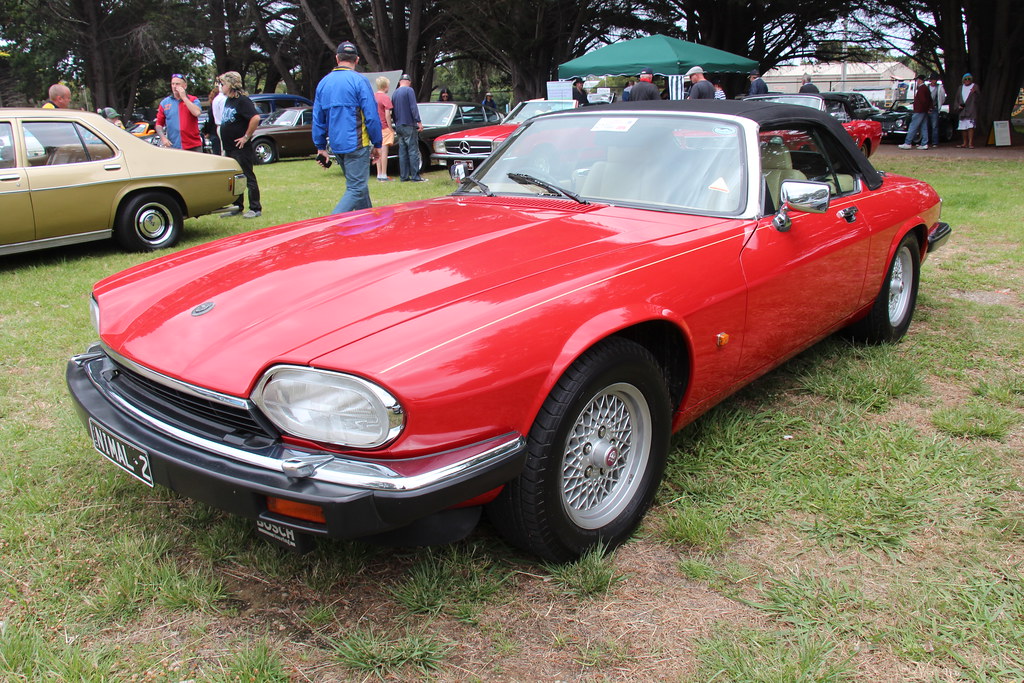
1. Jaguar XJ
When considering a luxury sedan that once aimed to challenge German dominance, the Jaguar XJ often comes to mind with its distinctive British elegance. However, an in-depth look reveals a vehicle that, according to Matas Buzelis, an automotive expert at carVertical, is riddled with issues that make it a regrettable purchase. Buzelis explicitly states, “Don’t buy a Jaguar XJ unless you want to deal with a plethora of technical issues,” a stark warning for prospective buyers.
The context further elaborates on the XJ’s declining appeal, noting that “Jaguar ceased its production in 2019 because nobody wanted them anymore, and they’re full of engineering flaws.” This cessation of production underscores a broader lack of market confidence and hints at deep-seated problems within the vehicle’s design and manufacturing. Such a commercial failure often correlates directly with owner dissatisfaction and frequent repair needs.
Owners of the last-generation XJs, in particular, face persistent challenges. Buzelis points out that these models “suffer from constant suspension and electrical issues,” which are notoriously expensive and complex to diagnose and repair in luxury vehicles. Moreover, the user experience is hampered by fundamental technological shortcomings, as “the touchscreen and other vital electronics are very slow,” detracting significantly from the expected modern luxury experience.
These pervasive technical and electronic flaws not only diminish the driving experience but also contribute to substantial long-term ownership costs. The combination of chronic issues and a lack of resale appeal makes the Jaguar XJ a prime example of a luxury car that demands more in repair bills and frustration than it delivers in prestige or performance.
Car Model Information: 2019 Jaguar XJ XJ Supercharged
Name: Jaguar XJ
Caption: 2015 Jaguar XJR (X351)
Manufacturer: Jaguar Cars
Production: 1968–2019
Class: Full-size,luxury car
Layout: Front-engine, rear-wheel-drive
Categories: 1970s cars, 1980s cars, 1990s cars, 2000s cars, 2010s cars
Summary: The Jaguar XJ is a series of mid-size/full-size luxury cars produced by British automobile manufacturer Jaguar Cars (becoming Jaguar Land Rover in 2013) from 1968 to 2019. It was produced across four basic platform generations (debuting in 1968, 1986, 2003, and 2009) with various updated derivatives of each. From 1970, it was Jaguar’s flagship four-door model. The original model was the last Jaguar saloon to have been designed under the leadership of Sir William Lyons, the company’s founder, and the model has been featured in a myriad of media and high-profile appearances.
Get more information about: Jaguar XJ
Buying a high-performing used car >>>
Brand: Jaguar Model: XJ
Price: $33,995 Mileage: 47,745 mi.
Read more about: 7 Iconic ’60s Classics: Unpacking the Million-Dollar Appeal of Automotive Legends

2. Cadillac XTS
The Cadillac XTS presents itself as a professional business car, embodying a typical luxurious interior with a modern exterior. However, despite this appearance, automotive expert Matas Buzelis contends that the Cadillac XTS is unequivocally “not worth its high price tag.” This assessment challenges the perceived value of a vehicle that aims to compete in the luxury sedan segment.
Buzelis asserts that consumers are essentially “paying extra for the Cadillac name here,” suggesting that the brand cachet does not align with the actual value offered. He explains, “You can find many other vehicles with the same specs and features for a much lower price,” which implies that the XTS fails to differentiate itself sufficiently to justify its premium cost when compared to alternatives on the market.
While the XTS does boast one technically advanced feature, its “pneumatic and magnetic suspension hybrid,” even this is presented with a significant caveat. Buzelis highlights that this supposed exceptional feature is, in practice, “too firm and expensive.” This duality means that a key engineering highlight designed to enhance the ride quality instead contributes to a less comfortable experience and potentially higher maintenance expenses, negating its luxury appeal.
The overall picture for the Cadillac XTS is one of a car that struggles to justify its position within the luxury segment. Its high price, coupled with the availability of similar or superior features in less expensive vehicles, indicates that buyers may ultimately regret the financial commitment. The XTS serves as a cautionary tale where brand perception outweighs tangible benefits for the consumer.
Car Model Information: 2015 Cadillac XTS Luxury
Name: Cadillac XTS
Caption: 2014 Cadillac XTS Luxury
Manufacturer: Cadillac
Production: Canada and US: May 2012–October 2019,China: February 2013–2020
ModelYears: 2013–2019,2014–2020 (China)
Assembly: Oshawa, Ontario
Designer: Tim Kozub,Christine Park (interior)
Class: Full-size car
BodyStyle: sedan (automobile)
Platform: GM Epsilon platform#Epsilon II
Related: Chevrolet Impala#10,Buick LaCrosse#Second generation (2010),Saab 9-5#2
Layout: Front-engine, front-wheel-drive layout
Engine: ubl
Transmission: GM 6T70 transmission,GM 6T75 transmission
Wheelbase: 111.7 in
Abbr: on
Length: 201.9 in
Width: 72.9 in
Height: 59.1 in
Weight: 3995 lb
Sp: us
Predecessor: Cadillac DTS,Cadillac STS
Successor: Cadillac CT5
Categories: 2010s cars, All-wheel-drive vehicles, Articles with short description, Cadillac vehicles, Cars introduced in 2012
Summary: The Cadillac XTS (short for X-Series Touring Sedan) is a full-size car built by the American company Cadillac from 2013 until 2019. It is a four-door sedan with seating for up to five passengers. Based on an enlarged version of the Epsilon II platform, it has a front-mounted engine that either drives the front wheels or drives all four wheels.
Replacing the smaller Cadillac STS and larger DTS, production began in May 2012 at the Oshawa Assembly Plant and launched in June as a 2013 model. Marketed with left-hand drive in the United States, Canada, Mexico, China, and the Middle East (except Israel), the XTS was also assembled by Shanghai GM, with production beginning in February 2013.
Get more information about: Cadillac XTS
Buying a high-performing used car >>>
Brand: Cadillac Model: XTS
Price: $14,450 Mileage: 82,595 mi.
Read more about: Gone But Not Forgotten: Unearthing the Stories Behind 14 Iconic American Cars That Drove Off into the Sunset

3. Tesla Model S
The Tesla Model S, a vehicle often praised for its revolutionary electric powertrain and impressive acceleration, struggles to live up to its “luxury” label in several critical areas. According to automotive expert Matas Buzelis, “Despite its booming popularity, the only luxurious things about the Tesla Model S are the acceleration and price.” This statement immediately sets a tone of skepticism regarding its overall luxury proposition.
Buzelis critically points out a significant disparity between the vehicle’s price point and its physical quality, noting that “Its starting price is $94,990, but the build quality and materials of the interior are similar to those in economy-class cars.” This highlights a core issue where the premium cost does not translate into the expected tactile and visual refinement typically associated with true luxury vehicles, leaving owners feeling shortchanged on interior quality.
Beyond the interior, the Model S is plagued by numerous operational flaws. Buzelis explicitly states that the car “has dozens of common issues,” a concern that directly impacts owner satisfaction and long-term reliability. Specific examples provided underscore the breadth of these problems, including “media control unit failure, broken suspension arms, defective touchscreens and stuck door handles.”
These widespread issues not only detract from the premium ownership experience but also lead to frequent and often costly repairs. The combination of a high price, questionable build quality, and persistent mechanical and electronic problems firmly places the Tesla Model S in the category of luxury cars that may not be worth the ongoing financial commitment, turning the dream of electric luxury into a recurring nightmare of fixes.
Car Model Information: 2021 Nissan Rogue SL
Name: Tesla Model S
ModelYears: 2013–present
Alt: A front-three quarter view of a gray Model S
Caption: #2016–2019: First major update
Designer: Franz von Holzhausen
Weight: cvt
Height: cvt
Width: cvt
Length: cvt
Wheelbase: cvt
ElectricRange: cvt
Battery: kWh,lithium-ion battery
Motor: Unbulleted list
Transmission: Reduction drive
Related: Tesla Model X
Layout: Rear-motor, rear-wheel drive,Dual-motor, all-wheel-drive,Tri-motor, all-wheel-drive layout
BodyStyle: liftback,sedan (automobile)
Class: Full-size car
Assembly: Unbulleted list
Production: June 2012 – present
Manufacturer: Tesla, Inc.
Sp: us
Chassis: Unibody
Categories: 2020s cars, All-wheel-drive vehicles, All Wikipedia articles written in American English, All articles containing potentially dated statements, Articles containing potentially dated statements from 2025
Summary: The Tesla Model S is a battery-electric, four-door full-size car produced by the American automaker Tesla since 2012. The automaker’s second vehicle and longest-produced model, the Model S has been described as one of the most influential electric cars in the industry. Car and Driver named it one of the best cars of the year in 2015 and 2016. Its various accolades include the Motor Trend Car of the Year Award in 2013.
Tesla started developing the Model S around 2007 under the codename WhiteStar. Initially, Henrik Fisker was appointed as the lead designer for the WhiteStar project; after a dispute with Elon Musk, Tesla’s CEO, Fisker was replaced by Franz von Holzhausen. By 2008, von Holzhausen had designed what would become the production Model S’s exterior. Tesla unveiled a prototype of the vehicle in March 2009 in Hawthorne, California. In 2010, Tesla acquired a facility in Fremont, California, to produce the Model S, which was previously owned by General Motors and Toyota. Series manufacture of the car officially began at the Tesla Fremont Factory in June 2012. Tesla carried out the final assembly for European markets at its facilities in Tilburg, Netherlands, between 2013 and 2021.
The Model S typically uses either one or initially two alternating current induction motors; since 2019, dual-motor versions have used a permanent magnet motor in the front, though the high-performance Model S Plaid’s three motors are permanent magnet units by default. Constructed mostly of aluminum, the Model S shares 30 percent of its components with the Model X—a crossover SUV that was introduced in 2015. The Model S has undergone several updates during its production, the most prominent ones occurring in 2016 and 2021. These updates have usually included modifications to the motor, such as changes to power or torque, revised exterior elements, and refreshed interior features. One such change included the 2015 introduction of Tesla Autopilot—a partial vehicle automation advanced driver-assistance system.
In 2015, the Model S was the world’s best-selling plug-in electric vehicle. In 2012, it was included on Time’s list of the Best Inventions of the Year, and the magazine later included it on its list of the 10 Best Gadgets of the 2010s in 2019. In 2014, The Daily Telegraph described the Model S as a “car that changed the world”. Road & Track argued that, with the introduction of the Plaid and features such as the yoke steering wheel, Tesla managed to turn the Model S into “perhaps one of the worst [cars in the world]”.
Get more information about: Tesla Model S
Buying a high-performing used car >>>
Brand: Tesla Model: Model S
Price: $20,995 Mileage: 117,217 mi.
Read more about: 12 New Cars Named ‘Best Buys’ for 2025: An Expert Guide for Savvy Shoppers
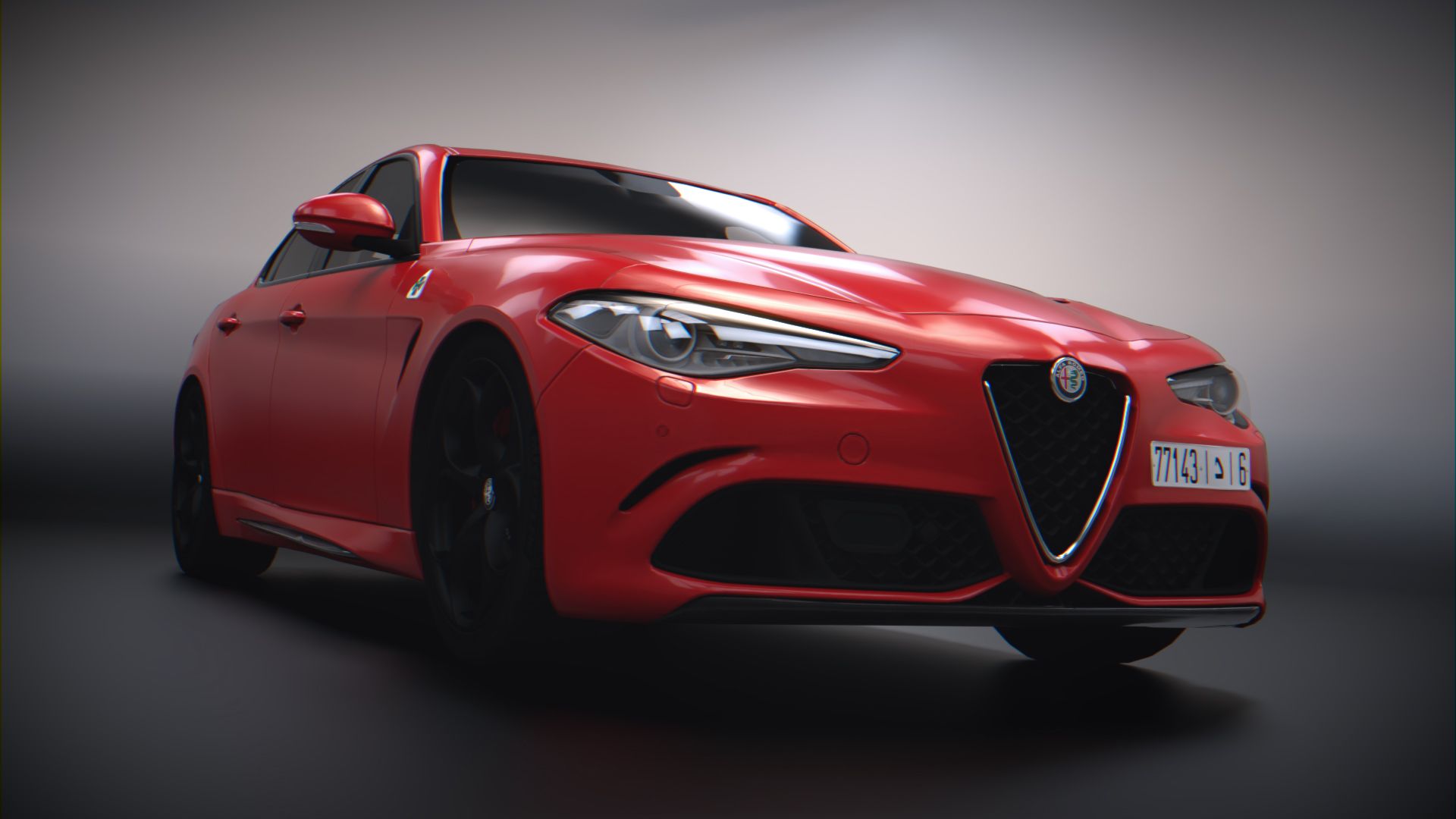
4. Alfa Romeo Giulia Quadrifoglio
For enthusiasts seeking an exhilarating driving experience, the Alfa Romeo Giulia Quadrifoglio often stands out as a performance marvel. Matas Buzelis praises it as “an exciting machine that does everything you want on a track,” highlighting its undeniable capabilities for high-performance driving. This aspect certainly appeals to a specific segment of the luxury car market focused on dynamic prowess.
However, the thrill of the track often gives way to significant frustrations in everyday ownership. Buzelis reveals a critical flaw: “many customers experience severe issues just a few thousand miles after leaving a dealership.” This immediate onset of problems after purchase is a major red flag, indicating underlying reliability concerns that undermine the vehicle’s overall value proposition.
The nature of these issues further compounds the problem. Buzelis lists a cascade of common failures, including “sensors, connectors, bearings and control units fail one after another.” Such systemic electrical and mechanical vulnerabilities suggest a car that is not built for consistent, trouble-free operation, leading to frequent garage visits and substantial repair bills that quickly diminish the ownership experience.
Adding to these reliability woes is a surprising observation about the interior. Despite the car’s considerable price tag, Buzelis notes, “you’d be surprised how cheap the interior is for an $80,000 car.” This discrepancy between the cost and the cabin’s quality creates a perception of poor value, making the Alfa Romeo Giulia Quadrifoglio a luxury vehicle that demands a premium price for track performance while neglecting the expected standards of interior luxury and long-term dependability.
Car Model Information: 2021 Nissan Rogue SL
Name: Alfa Romeo Quadrifoglio
Logo: Alfa-romeo-quadrifoglio-logo.png
LogoCaption: Quadrifoglio logo introduced in June 2015
Type: Marque
Industry: Automotive industry
Foundation: [object Object]
Owner: Stellantis
Parent: Alfa Romeo
Homepage: www.alfaromeo.com/quadrifoglio
Categories: Alfa Romeo, Alfa Romeo in Formula One, Alfa Romeo in motorsport, Articles containing Italian-language text, Articles with short description
Summary: The Quadrifoglio (Italian for ‘four-leaf clover’; pronounced [kwadriˈfɔʎʎo]) is the brand used by the Italian auto manufacturer Alfa Romeo to indicate a high performance model. The Quadrifoglio is usually placed on the side panels of the car, above or behind the front wheels—on the front wings in the case of modern vehicles. The logo consists of a green four-leaf clover contained in a triangle.
Get more information about: Alfa Romeo Quadrifoglio
Buying a high-performing used car >>>
Brand: Alfa Romeo Model: Giulia Quadrifoglio
Price: $20,995 Mileage: 117,217 mi.
Read more about: Redefining Speed and Savings: 10 Sports Cars That Master 30 MPG Highway
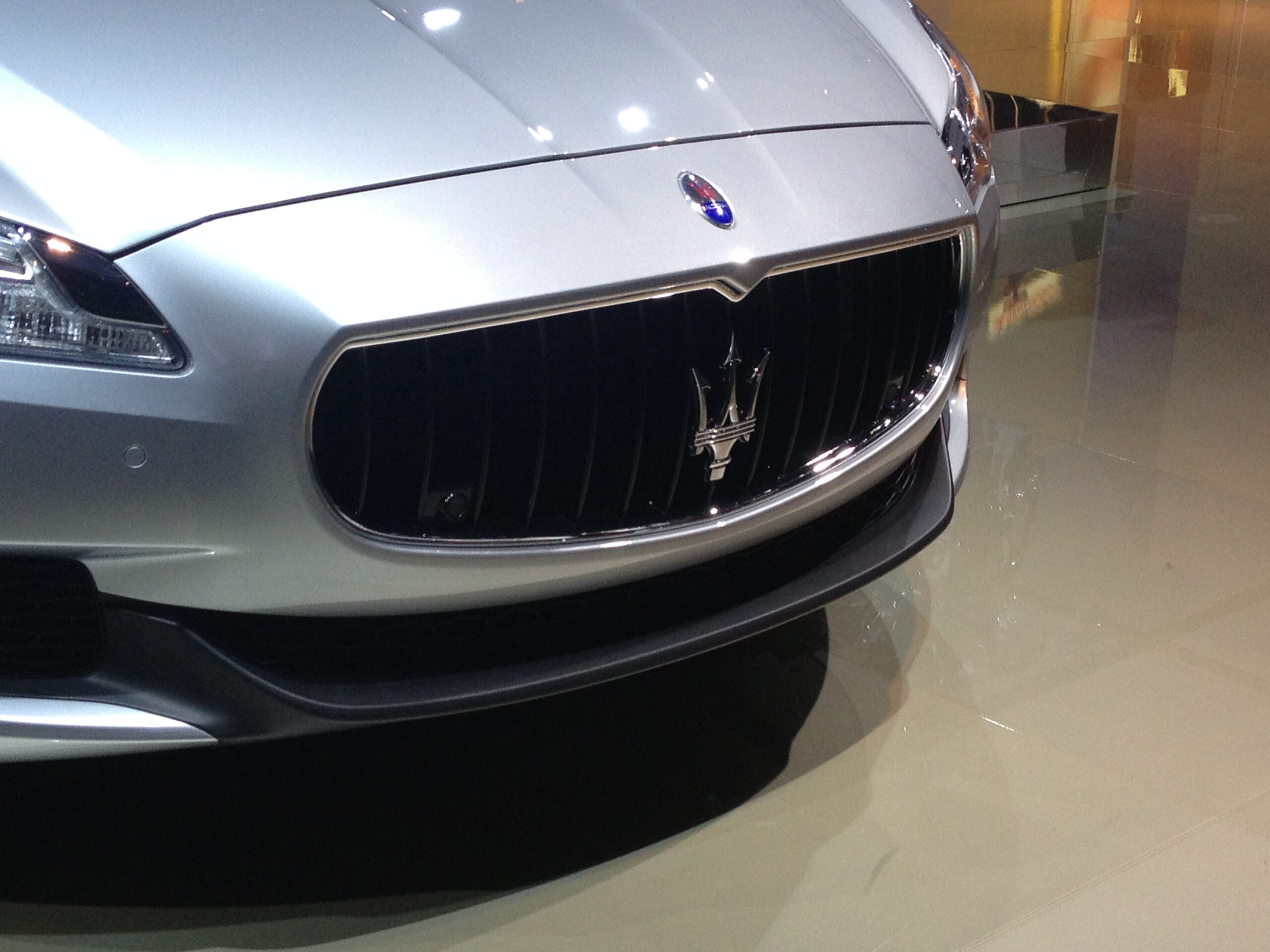
5. Maserati Quattroporte
The Maserati Quattroporte, with its distinctive Italian styling and powerful presence, often conveys an image of luxury and sportiness. Yet, beneath this aspirational exterior, the car suffers from significant financial drawbacks that make it a questionable luxury investment. Matas Buzelis points out that the Maserati Quattroporte “loses its value faster than other vehicles in its class,” a critical factor for any high-end purchase.
This rapid depreciation is not merely a minor concern; it is an alarmingly severe issue. A study by Business Insider, cited in the context, calculated that the Maserati Quattroporte “suffered a whopping 72.2% depreciation over the first three years.” Such an extreme loss of value makes it one of the most financially punitive luxury sedans on the market, drastically impacting its long-term cost of ownership and making resale a daunting prospect.
Beyond depreciation, the Quattroporte also falls short in fundamental areas of quality and performance. Buzelis notes that “Their performance numbers are poor,” suggesting that the driving dynamics do not align with the premium branding. Furthermore, a deeper look at its construction reveals that “many materials are cheap and overall build quality is pathetic,” which directly contradicts the expectations of a luxury vehicle at its price point.
Collectively, these issues lead to an unambiguous conclusion: the Maserati Quattroporte is “extremely overpriced.” Buzelis unequivocally states, “You can hardly find a worse car in the full-size luxury car market,” underscoring its profound failings in terms of value, performance, and build quality. For buyers seeking a luxury sedan that offers enduring worth, the Quattroporte presents a significant financial risk.
Car Model Information: 2012 Maserati Quattroporte S
Name: Maserati Quattroporte
Caption: Maserati Quattroporte VI
Manufacturer: Maserati
Production: 1963–1969,1971,1974–1990,1994–2001,2003–2012,2013–2023
Assembly: Modena,Grugliasco,Turin
Class: Full-size luxury car
BodyStyle: Sedan (car)
Sp: uk
Categories: 1970s cars, 1980s cars, 1990s cars, 2000s cars, 2010s cars
Summary: The Maserati Quattroporte (Italian pronunciation: [ˌkwattroˈpɔrte]) is a four-door full-size luxury sedan produced by Italian automobile manufacturer Maserati. The name translated from Italian means “four doors”. The production of the sixth generation ended in late 2023, with the first generation introduced in 1963.
Get more information about: Maserati Quattroporte
Buying a high-performing used car >>>
Brand: Maserati Model: Quattroporte
Price: $12,980 Mileage: 82,851 mi.
Read more about: 15 Classic Cars You Might Want To Skip: An Expert Guide for Discerning Collectors
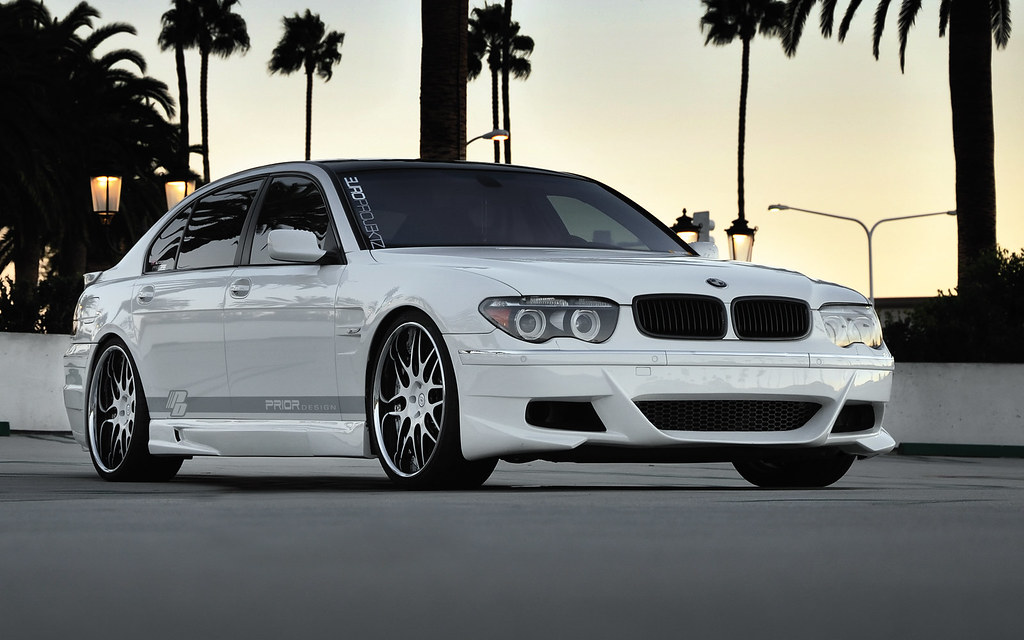
6. BMW 7 Series
The BMW 7 Series is widely recognized as a pinnacle of luxury sedans, celebrated for its “advanced technology, luxurious interior and powerful engines.” These attributes undoubtedly contribute to its strong appeal among consumers seeking a sophisticated driving experience. However, the sophistication comes with significant financial implications that prospective buyers must carefully consider.
Kyle MacDonald, VP at Force by Mojio, a GPS fleet tracking system, highlights a primary concern: “the car’s complex systems and high-end materials can lead to expensive repairs and maintenance costs.” The intricate engineering and specialized components inherent in the 7 Series mean that when issues arise, they often require costly parts and highly skilled labor, quickly inflating ownership expenses well beyond what many anticipate.
In addition to the high cost of repairs, the 7 Series also contends with a notable depreciation rate. MacDonald explains that “the car’s depreciation rate can be relatively high, meaning that it may not retain its value as well as other luxury cars.” This rapid loss of value further exacerbates the total cost of ownership, as the resale value diminishes significantly over time, impacting the car’s overall financial viability.
While the BMW 7 Series offers a wealth of features and a potent performance, these advantages are offset by its demanding financial profile. MacDonald concludes that “While it may be a popular choice for many, it may not be the best option for those who are looking for a luxury car with lower maintenance costs and a better resale value.” This makes the 7 Series a car that, despite its initial allure, can become a financial burden for those unprepared for its true long-term costs.
Car Model Information: 2024 Ford Mustang GT Premium
Name: BMW 7 Series
Caption: BMW 7 Series (G11)
Manufacturer: BMW
Production: 1977–present
Class: Full-size car,luxury car
BodyStyle: sedan (car)
Predecessor: BMW New Six
Categories: All articles with dead external links, Articles with dead external links from July 2021, Articles with short description, BMW vehicle series, CS1 Chinese-language sources (zh)
Summary: The BMW 7 Series is a full-size luxury sedan manufactured and marketed by the German automaker BMW since 1977. It is the successor to the BMW E3 “New Six” sedan and is now in its seventh generation.
The 7 Series is BMW’s flagship car and is only available in a sedan bodystyle (including long wheelbase and limousine models). It traditionally introduces technologies and exterior design themes before other models in BMW’s lineup.
The first generation of the 7 Series was powered by straight-6 petrol engines, and following generations have been powered by inline-4, straight-6, V8 and V12 engines with both natural aspiration and turbocharging. Since 1995, diesel engines have been optional in the 7 Series.
Unlike the BMW 3 Series and BMW 5 Series sedans, BMW does not offer a full M model, but once offered an M performance variant, the BMW M760 with its 6.6L V12 (at the time the most powerful BMW ever made, not to be confused with BMW 760 6.6 V12 which does not offer the same performance). The Alpina B7 served as the high-performance variant of the 7 Series.
Get more information about: BMW 7 Series
Buying a high-performing used car >>>
Brand: BMW Model: 7 Series
Price: $48,997 Mileage: 24,328 mi.
Read more about: 15 Classic Cars You Might Want To Skip: An Expert Guide for Discerning Collectors

7. Mercedes-Benz S-Class
The Mercedes-Benz S-Class has long held a revered status as the quintessential luxury sedan, setting benchmarks for comfort, innovation, and prestige. Often considered the ultimate symbol of automotive excellence, its advanced features, opulent interior, and silky-smooth ride draw in discerning buyers worldwide. However, according to Luis Johnson, an automobile technician and founder of BatteryQuery, the financial reality of S-Class ownership can quickly dim its shine, particularly for those looking at long-term value and manageable running costs.
Johnson highlights a significant concern for prospective owners: “The S-Class is often considered the benchmark for luxury sedans, but its high purchase price and rapid depreciation can be a significant burden for consumers.” This initial investment, while substantial, depreciates quickly, meaning the car loses a considerable portion of its value soon after leaving the showroom. For an asset that costs so much upfront, this rapid loss of equity can be a challenging pill to swallow, particularly if resale value is a factor in the purchase decision or if the owner plans to upgrade within a few years.
Beyond the initial price and subsequent depreciation, the S-Class also comes with an array of ongoing financial commitments that can accumulate rapidly. Johnson further elaborates that “the cost of repairs and maintenance on this car is substantial, leading to long-term ownership costs that can be prohibitive for many buyers.” The intricate engineering, sophisticated electronics, and specialized components that contribute to the S-Class’s luxurious experience — from its adaptive air suspension to its complex infotainment systems — all translate directly into exorbitant repair bills when issues arise.
When something goes wrong with an S-Class, the parts are premium-priced, often unique to the model, and the labor required often demands highly specialized expertise and diagnostic equipment, pushing up expenses significantly. These aren’t just minor inconveniences; they can represent major financial outlays, transforming what was once a dream acquisition into a recurring financial burden for even affluent owners.
Therefore, while the Mercedes-Benz S-Class offers an unparalleled experience in terms of luxury and technological advancement, it demands a significant financial commitment not just at the point of purchase, but consistently throughout its ownership lifecycle. Prospective buyers must carefully weigh the desire for its prestigious allure against the tangible and often prohibitive costs of its rapid depreciation and substantial, ongoing maintenance needs, ensuring they are fully prepared for the comprehensive financial journey that comes with this iconic luxury vehicle.
Read more about: Unstoppable Icon: Charlize Theron’s Surprising Car Theft, Automotive Passions, and the High Stakes of Hollywood Luxury
8. Audi A8
The Audi A8, known for its sleek design, sophisticated aesthetic, and cutting-edge features, presents itself as a compelling choice in the full-size luxury sedan segment. Its understated elegance, quattro all-wheel-drive prowess, and advanced technology aim to provide a refined, secure, and powerful driving experience that rivals its European counterparts. However, beneath its polished exterior, the A8’s long-term reliability and the associated costs can become a major point of contention for owners, as noted by automobile technician Luis Johnson.
Johnson points out a critical aspect that potential buyers often overlook when enchanted by the A8’s design and advanced features: “This car’s sleek design and advanced features can be enticing, but its reliability record has been mixed.” This mixed reliability translates into an unpredictable ownership experience, where the initial attraction to its design and features can quickly be overshadowed by unexpected mechanical or electronic failures. Unlike some rivals known for consistent, bulletproof dependability, the A8 can present a varied picture of operational consistency, requiring buyers to approach with caution and realistic expectations.
The direct consequence of this inconsistent reliability is often felt most acutely in the owner’s wallet. Johnson warns that “Consumers may find themselves frequently visiting the mechanic for repairs and maintenance, leading to significant expenses.” These frequent trips to the service center are not just an inconvenience that pulls the car away from daily use; they represent substantial financial outlays. The advanced systems, intricate wiring, and bespoke components integral to the Audi A8’s luxury stature mean that even what might seem like a minor issue can quickly escalate into a notably expensive repair.
Whether it’s complex suspension components, sophisticated infotainment glitches, or intricate engine sensors, the costs for both parts and specialized labor can accumulate rapidly, adding up to a hefty long-term cost of ownership. This can quickly erode any perceived value from its purchase price, making the A8 a luxury car that demands more than just its upfront investment, but also a continuous stream of funds to keep it running optimally.
In essence, while the Audi A8 undeniably offers a luxurious and technologically rich environment, its propensity for mixed reliability and the subsequent high costs of frequent repairs and maintenance present a serious consideration for any buyer. For those seeking a trouble-free luxury experience where financial predictability is key, the A8’s potential to demand continuous financial and time investment at the mechanic’s shop might make it a less ideal choice, despite its initial magnetic appeal.
Car Model Information: 2025 Audi A8 L 55
Name: Audi A8
Manufacturer: Audi AG
Assembly: Neckarsulm
Production: #D2
Class: Full-size,luxury car
BodyStyle: sedan (automobile)
Platform: List of Volkswagen Group platforms
Layout: FF layout
Related: Audi S8
Predecessor: Audi V8
Categories: 2000s cars, 2010s cars, 2020s cars, All-wheel-drive vehicles, All articles lacking reliable references
Summary: The Audi A8 is a full-size luxury sedan manufactured and marketed by the German automaker Audi since 1994. Succeeding the Audi V8, and now in its fourth generation, the A8 has been offered with either front- or permanent all-wheel drive and in short- and long-wheelbase variants. The first two generations employed the Volkswagen Group D platform, with the current generation deriving from the MLB platform. After the original model’s 1994 release, Audi released the second generation in late 2002, the third in late 2009, and the fourth and current iteration in 2017. Noted as the first mass-market car with an aluminium chassis, all A8 models have used this construction method co-developed with Alcoa and marketed as the Audi Space Frame.
A mechanically upgraded, high-performance version of the A8 debuted in 1996 as the Audi S8. Produced exclusively at Audi’s Neckarsulm plant, the S8 is fitted standard with Audi’s quattro all-wheel drive system. The S8 was only offered with a short-wheelbase for the first three generations, being joined by a long-wheelbase variant for the fourth generation.
Get more information about: Audi A8
Buying a high-performing used car >>>
Brand: Audi Model: A8
Price: $77,428 Mileage: 935 mi.
Read more about: Robert Redford: The Last American Movie Star – An In-Depth Look at a Screen Legend’s Enduring Legacy and Impact

9. Land Rover Range Rover Evoque
The Land Rover Range Rover Evoque, upon its debut, captivated the luxury SUV market with its distinctive, fashion-forward design and the promise of premium functionality, including a hint of off-road capability, all packaged into a compact and urban-friendly form. It boasts a stylish interior, a strong brand image associated with rugged luxury, and a sense of exclusivity. However, a deeper examination of its ownership profile, particularly from a consumer-oriented perspective, reveals a host of concerns regarding reliability, long-term costs, and practical utility, which collectively make it a questionable investment for many luxury SUV buyers.
A significant hurdle for the Evoque is its documented reliability issues. The context explicitly highlights that “The Range Rover has reliability concerns, whether high maintenance, poor performance, or lousy off-road capabilities.” For a vehicle positioned as a versatile luxury SUV meant to handle diverse conditions, these broad reliability issues are particularly troubling. Owners often report frequent needs for service and repairs, suggesting that the Evoque may spend more time in the workshop addressing issues than on the open road or navigating light trails, significantly detracting from the premium ownership experience and leading to considerable frustration.
The financial implications of these reliability concerns are further compounded by a notably poor depreciation rate. The context explicitly states, “Along with that, the depreciation value is inferior, making it harder to sell later on.” This rapid loss of value means that the Evoque, despite its initial premium price tag, does not retain its worth well over time. For buyers who consider resale value as a critical component of their automotive investment strategy, the Evoque presents a substantial financial risk, effectively transforming a luxury purchase into a quickly depreciating asset that is difficult to offload without incurring a significant financial loss.
Furthermore, despite its sleek and stylish exterior, the Evoque often disappoints in terms of practical utility, which is a key expectation for an SUV. The context notes, “The Range Rover is praised for its stylish design, yet the interior does not offer a lot of room, causing the car to feel packed.” This cramped interior, for an SUV that ostensibly offers versatility, can be a major drawback, especially for families, those needing ample cargo space, or even simply desiring spaciousness inherent to the luxury segment. The lack of interior room limits its practical appeal and often leaves owners feeling shortchanged on functionality.
Coupled with its high maintenance demands, the documented “poor performance” that does not align with its athletic looks, and the fact that its “lousy off-road capabilities” contradict its brand heritage, the Land Rover Range Rover Evoque struggles to justify its luxury price tag when considering its actual long-term value, persistent reliability issues, and practical shortcomings. It serves as a cautionary tale where style and brand perception often outweigh tangible benefits for the consumer in the long run.
Car Model Information: 2024 Ford Mustang GT Premium
Name: Range Rover Evoque
Caption: 2019 Range Rover Evoque R-Dynamic
Manufacturer: Land Rover Ltd.,Jaguar Land Rover
Production: July 2011 – present
Class: subcompact crossover SUV
Layout: ubl
Predecessor: Land Rover Freelander
Sp: uk
Categories: 2020s cars, ANCAP small off-road, All-wheel-drive vehicles, All Wikipedia articles written in British English, All articles lacking reliable references
Summary: The Land Rover Range Rover Evoque (), also known as the Range Rover Evoque or the Land Rover Evoque, is a subcompact luxury crossover SUV developed and produced by Jaguar Land Rover under their Land Rover marque. The original Evoque was a development of the Land Rover LRX concept vehicle, which was unveiled at the North American International Auto Show in January 2008. The first generation Evoque was produced from July 2011 until 2018 in three and five-door versions, with both two-wheel and four-wheel drive. The second generation of the car went into production in 2018.
Get more information about: Range Rover Evoque
Buying a high-performing used car >>>
Brand: Land Rover Model: Range Rover Evoque
Price: $48,997 Mileage: 24,328 mi.
Read more about: Buyer’s Alert: 7 SUVs Prone to Major Breakdowns Before Hitting 80,000 Miles
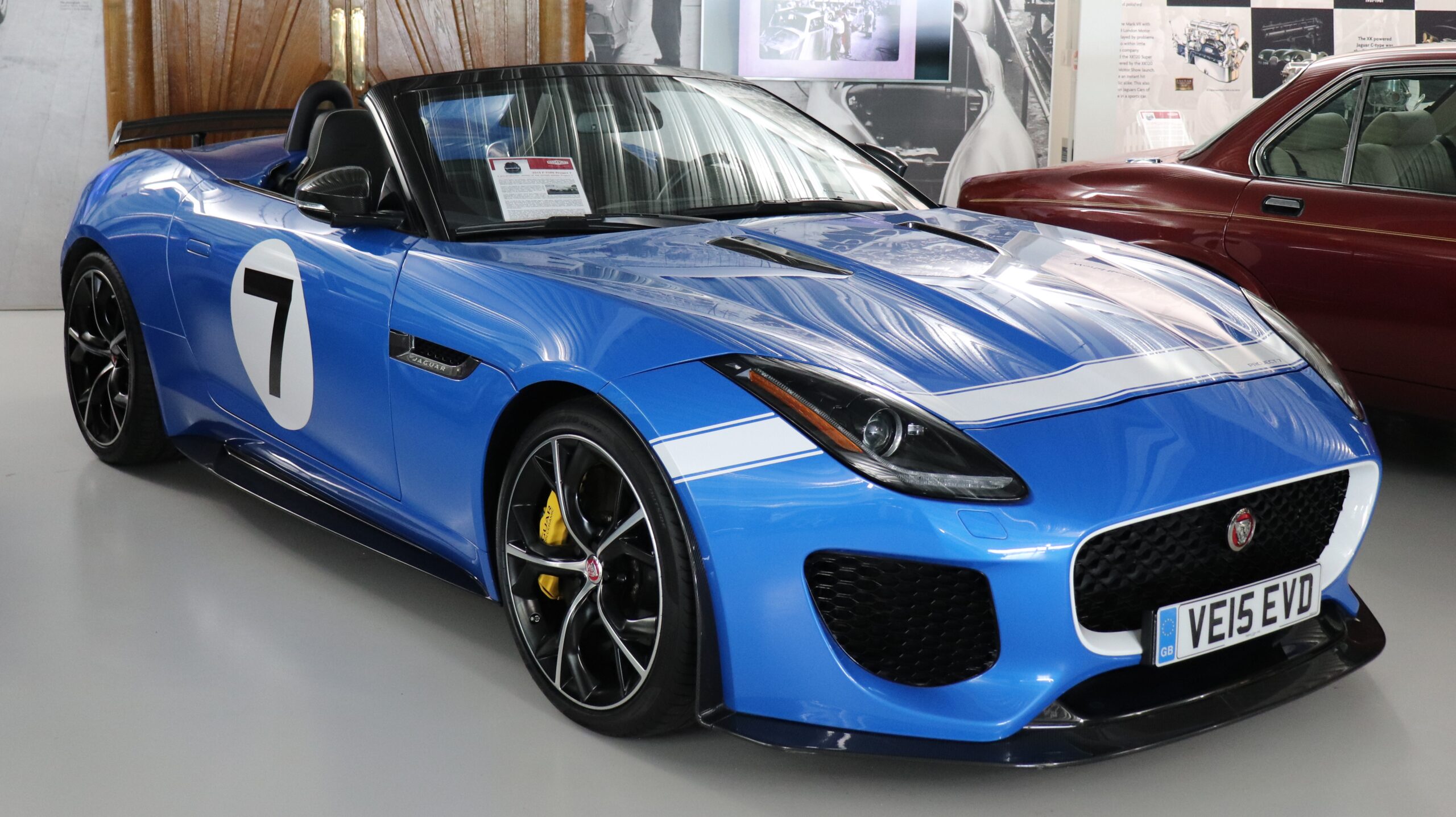
10. Jaguar XF
The Jaguar XF, with its sleek lines, sporty demeanor, and sophisticated British charm, aims to carve out a distinctive niche in the highly competitive luxury sports sedan segment. It often appeals to those looking for an alternative to the ubiquitous German offerings, promising a unique blend of performance, elegance, and exclusivity. However, a detailed financial analysis of its ownership reveals that this initial appeal can come at a remarkably high price, making it one of the less advisable luxury car purchases in terms of overall long-term value and cost-effectiveness.
One of the most striking issues with the Jaguar XF is the substantial long-term cost of ownership, which can quickly turn a thrilling acquisition into a financial burden. The context explicitly states, “purchasing one of these sporty sedans will cost you $63,154 over five years, factoring in depreciation, fuel costs, and repairs.” This staggering figure is a clear warning sign for prospective buyers, indicating that the XF demands a significant and continuous financial commitment far beyond its initial purchase price, far outstripping many competitors in its class.
A primary contributor to this exorbitant five-year cost is the XF’s often-steep depreciation. While specific depreciation percentages are not provided for the XF in this particular context, the inclusion of “depreciation” as a major factor in the high overall 5-year cost indicates a substantial and rapid loss of value. This means the car’s market worth declines quickly, severely impacting its resale potential. This factor, combined with potentially high fuel costs – a common trait for powerful, performance-oriented luxury vehicles – further compounds the financial burden for owners.
Moreover, the expected expenses for repairs, inherent in sophisticated and often complex luxury cars, also play a significant role. Jaguars, known for their unique engineering, can often incur higher costs for specialized parts and labor compared to more mainstream luxury brands. These factors cumulatively impact the car’s perceived value proposition, especially when compared against rivals that may offer better long-term retention of worth and more predictable maintenance schedules, making the XF’s financial viability difficult to sustain.
Indeed, the Jaguar XF is critically rated as “one of the worst luxury models for the value it offers.” This unambiguous assessment underscores its failure to deliver a worthwhile return on investment for its owners. Despite its impressive engine power and available all-wheel-drive models, the cumulative financial drain from rapid depreciation, fuel consumption, and particularly persistent repair expenses places the XF in a category of luxury sedans that are extremely difficult to recommend for their long-term economic viability. Buyers drawn to its initial allure should be acutely aware of the significant and ongoing financial demands it entails.
Car Model Information: 2021 Jaguar XF P300 R-Dynamic SE
Categories: All set index articles, Articles with short description, Jaguar vehicles, Set index articles, Short description is different from Wikidata
Summary: Jaguar XF may refer to:
Jaguar XF (X250) (2007–2015), an executive/luxury mid-size sports saloon car
Jaguar XF (X260) (2015–2024), the second generation of the executive/mid-size luxury sports saloon
Get more information about: Jaguar XF
Buying a high-performing used car >>>
Brand: Jaguar Model: XF
Price: $29,500 Mileage: 62,694 mi.
Read more about: Buyer Warning: 9 Sports Cars That Become Reliability Nightmares Before 50,000 Miles

11. Maserati GranTurismo
The Maserati GranTurismo, an icon of Italian design and automotive passion, undoubtedly delivers a captivating blend of sleek aesthetics and a potent, characterful engine, promising an exhilarating and emotionally charged driving experience. Its distinctive exhaust note, elegant contours, and rich heritage are designed to turn heads and stir emotions, making it a dream car for many enthusiasts who prioritize performance and style. However, the allure of driving a GranTurismo often collides with the harsh realities of long-term ownership, which can quickly transform passion into profound financial regret.
One of the most significant financial drawbacks of the GranTurismo is its rapid and substantial depreciation. The context explicitly reveals that “while driving this car may be enjoyable, it will be worth a lot less in a few years than what you bought it for.” This statement underscores a profound financial reality: the initial premium paid for its exclusivity and exhilarating performance quickly evaporates. For a car in this elite segment, such a significant depreciation makes it an extremely poor financial asset, particularly for those who might consider future resale or view their vehicle as a long-term investment.
Beyond the initial depreciation, the GranTurismo is infamous for its exorbitant cost of ownership and maintenance. Joe Giranda, managing member at CFR Classic, a specialist in international car shipping, notes emphatically that “Its high cost of ownership and maintenance also make it hard to justify its price tag.” This is a recurring theme for high-performance Italian exotics, where specialized, often bespoke parts, a limited network of approved service centers, and complex, intricate engineering contribute to truly astronomical repair bills. Even what might seem like routine servicing can run into thousands of dollars, making every garage visit a significant and often dreaded financial event for the owner.
Furthermore, despite its status and advanced technology, the GranTurismo’s offerings often fall short when considering its premium price point. The context states that “The technology built within is advanced, but for this premium cost, it should not be where it is.” This suggests that while the technology is certainly present, it doesn’t always meet the cutting-edge expectations for its price, potentially feeling a step behind rivals. Coupled with notoriously poor gas mileage, which “may be due to the large engine that eats up gas,” the Maserati GranTurismo becomes a luxury car that offers immense driving pleasure but demands a disproportionately high ongoing financial commitment, making its overall value proposition extremely difficult to defend in a pragmatic analysis.
Car Model Information: 2012 Maserati GranTurismo MC
Name: Maserati GranTurismo,Maserati GranCabrio
Manufacturer: Maserati
Production: 2007 – December 2019 (40,520 produced),April 2023 – present
ModelYears: 2008–2019,2023–present
Class: Grand tourer
BodyStyle: 2+2 (car body style),coupé
Predecessor: Maserati Coupé
Categories: 2010s cars, All articles lacking reliable references, All articles with unsourced statements, Articles lacking reliable references from October 2024, Articles with hAudio microformats
Summary: The Maserati GranTurismo and GranCabrio are a series of grand tourers produced by the Italian manufacturer Maserati, succeeding the Maserati Coupé and Spyder.
The first generation GranTurismo (M145) was introduced at the 2007 Geneva Motor Show and was produced from 2007 to December 2019. It set a record for the fastest development of a car, going from design to production in just nine months. The model featured a 4.2-litre V8 engine initially, which was later upgraded to a 4.7-liter engine in the GranTurismo S variant. The GranTurismo MC, a racing version developed for the FIA GT4 European Cup, and the GranTurismo MC Sport Line, a customisation programme, were also part of the lineup.
The GranTurismo Sport, introduced in 2012, replaced the GranTurismo S and featured a revised 4.7-litre engine. The GranTurismo MC Stradale, unveiled in 2010, is a more track-focused version inspired by a race variant. The GranCabrio convertible version was unveiled at the 2009 Frankfurt Motor Show and produced from 2010 to 2019. The GranCabrio Sport was introduced in 2011 and the GranCabrio MC was launched in 2013, the latter featuring improved aerodynamics and a light bump in power.
The second generation, GranTurismo II (M189), was revealed in 2022 and began production in April 2023. It offers three models: Modena, Trofeo, and Folgore (electric). Based on the Giorgio Sport platform, petrol engined models feature a newly-developed 3.0-litre Nettuno twin-turbocharged V6 engine, with the Trofeo variant being the most powerful at 550 PS (405 kW; 542 hp). The Folgore model is a battery electric version with a range of 450 km (279.6 mi).
Get more information about: Maserati GranTurismo
Buying a high-performing used car >>>
Brand: Maserati Model: GranTurismo
Price: $39,999 Mileage: 24,295 mi.
Read more about: Beyond the Legends: A Deep Dive into 14 Underrated Maseratis with Enduring Appeal
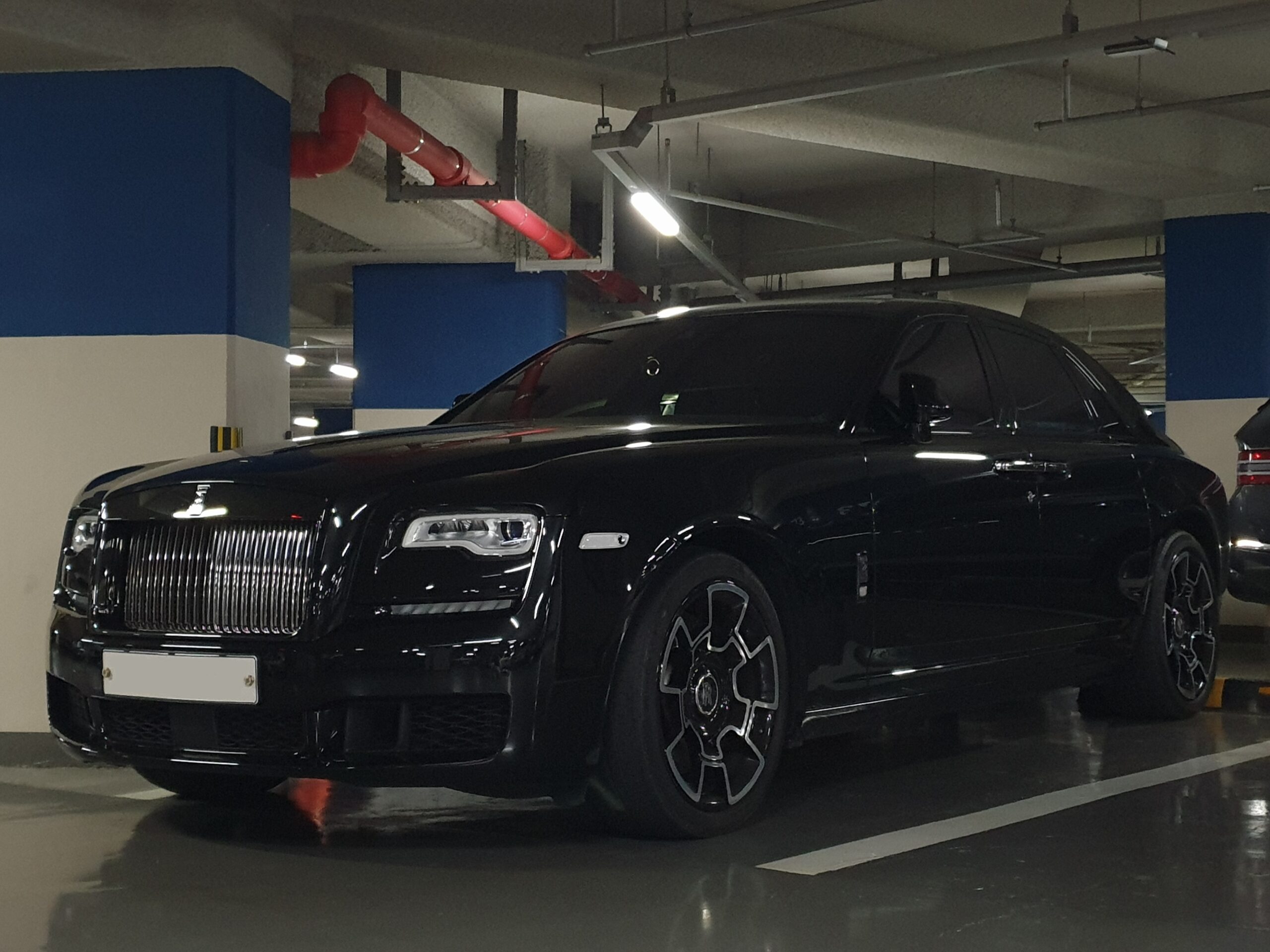
12. Rolls-Royce Ghost
The Rolls-Royce Ghost stands as an undeniable emblem of ultimate luxury, unparalleled prestige, and exquisite craftsmanship, catering to an elite clientele for whom cost is often no object. Its stately presence, whisper-quiet cabin, and meticulously handcrafted interior represent the pinnacle of automotive indulgence. Yet, even within this rarefied segment, experts highlight specific reasons why the Ghost, despite its formidable status and sheer opulence, may not be a justifiable investment for a discerning buyer, especially when considering its technological offerings and the sheer magnitude of its ownership expenses.
A surprising critique for a vehicle of this caliber concerns its technological features, which, for a car so aspirational, are expected to be at the absolute forefront. Joe Giranda explicitly states, “Its lack of technological features makes it outdated when compared to its competitors.” For a car that commands such an astronomical price, a perceived deficit in modern, state-of-the-art technology, particularly in areas like advanced infotainment or cutting-edge driver-assistance systems, can be a significant drawback. This observation suggests that some of the Ghost’s immense cost may not be fully reflected in its digital capabilities, potentially making it feel less ‘future-proof’ or innovative than equally priced rivals.
However, the most formidable and perhaps least surmountable barrier to justifying the Rolls-Royce Ghost’s value lies in its truly astronomical maintenance costs. Giranda unequivocally states, “Maintenance costs are also very expensive, making this car not worth the money for most people.” This sentiment is powerfully echoed elsewhere in the context, which warns that “A routine maintenance trip may cost you thousands of dollars because the parts are hard to obtain.” The specialized nature of its components, the limited network of approved service centers, and the bespoke craftsmanship involved in every aspect of its construction all contribute to maintenance bills that far exceed those of even other high-end luxury vehicles, making even basic upkeep a profound financial undertaking.
Beyond the technological and maintenance issues, the Rolls-Royce Ghost also struggles with practical considerations like fuel efficiency, a point of concern even for those with deep pockets. As a “heavy car,” it “does not get good gas mileage,” a factor that, while perhaps minor for its target demographic, still contributes to the overall running cost and environmental impact. The bespoke nature of its parts not only drives up repair costs but also means that obtaining them can be a time-consuming process, leading to prolonged downtime for the vehicle.
While the Rolls-Royce Ghost undeniably delivers an experience of ultimate luxury and status, its surprisingly outdated technological offerings, truly prohibitive maintenance expenses, challenges in parts availability, and practical inefficiencies lead many car advocates to question its overall value proposition. Even for the wealthiest of buyers, the ongoing financial demands and potential for technological disappointment can make the Rolls-Royce Ghost a less than ideal choice for a luxury vehicle designed to provide seamless, stress-free ownership.
Read more about: From Dust to Dollars: Record-Breaking Classic Cars Unearthed from Barns and Forgotten Garages
Ultimately, the journey through the world of luxury automobiles reveals a fascinating dichotomy. While the initial appeal of opulence, advanced engineering, and brand prestige is undeniable, a closer look at the long-term realities exposes a landscape dotted with potential financial pitfalls. From cars burdened by rapid depreciation and exorbitant maintenance bills to those offering outdated technology or lacking practical utility, it’s clear that not all luxury vehicles deliver a consistently rewarding ownership experience. This comprehensive guide serves as a crucial compass, helping discerning buyers navigate the intricate details of luxury car ownership. By understanding which models truly embody lasting value and which ones might prove to be a recurring financial burden, you’re empowered to make a decision that ensures your dream luxury car remains a source of joy, not regret.


